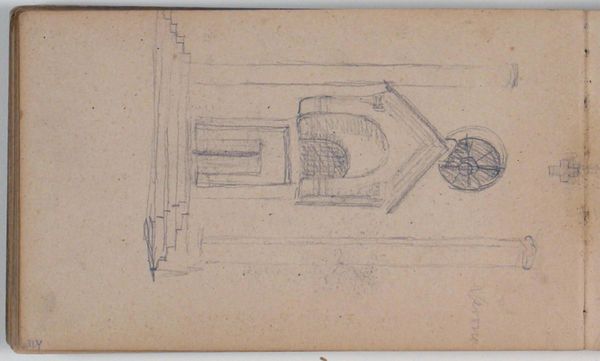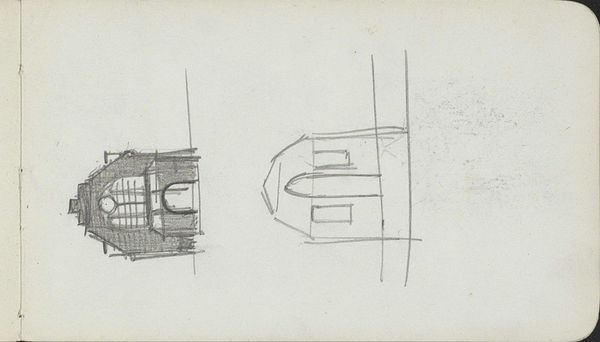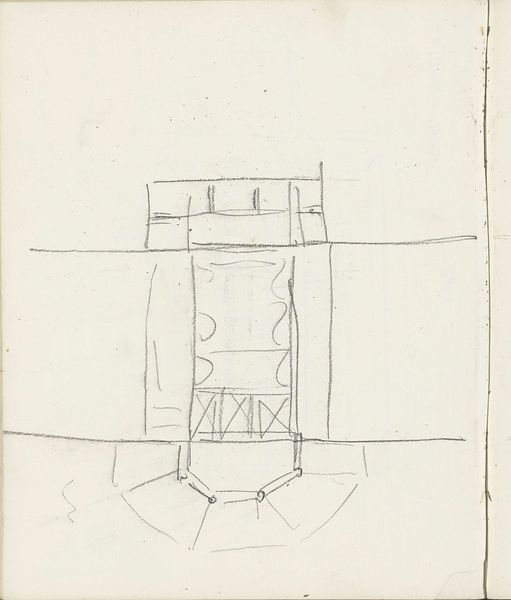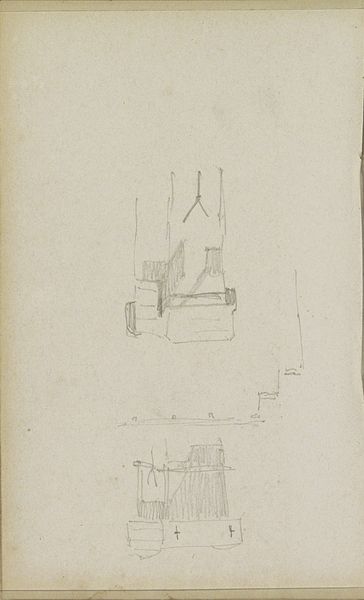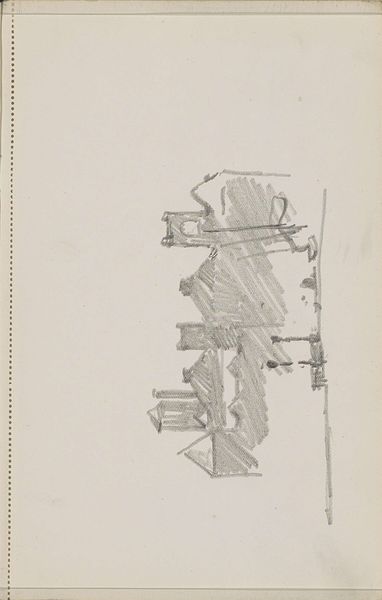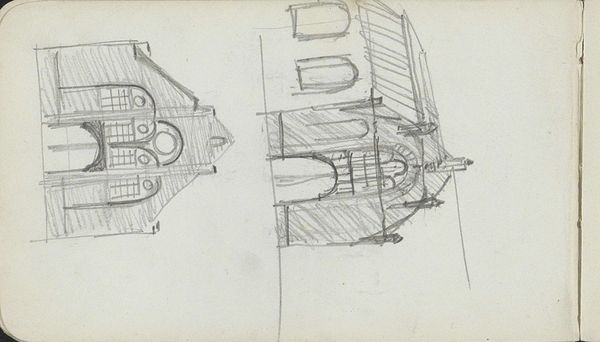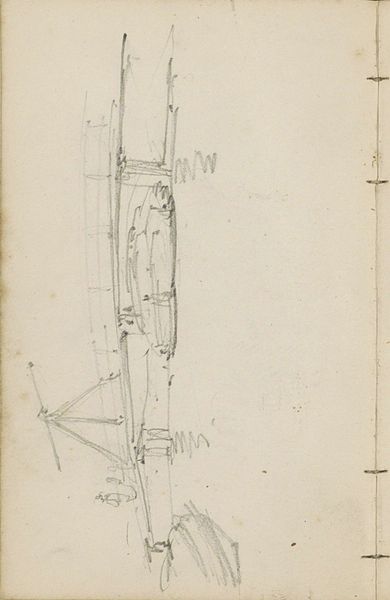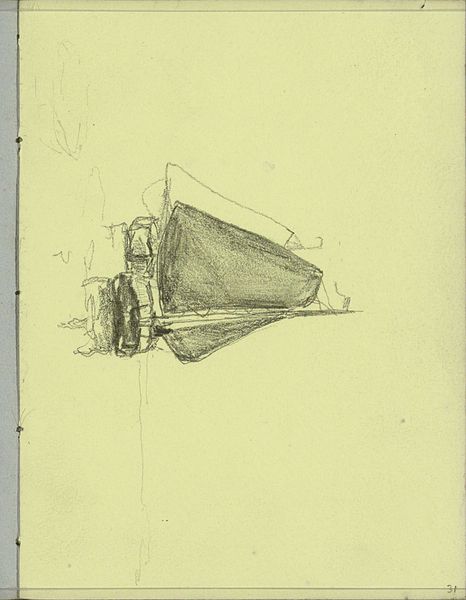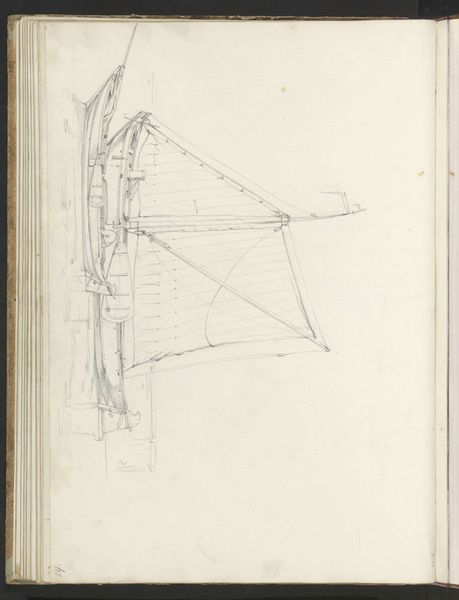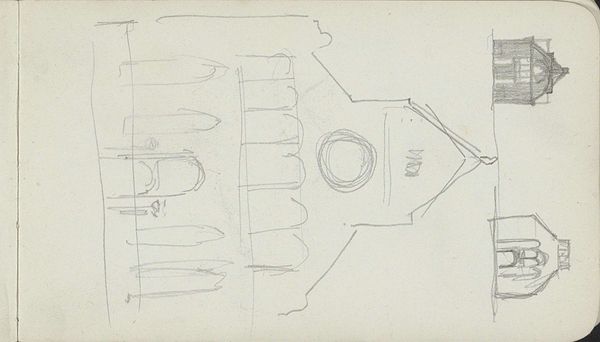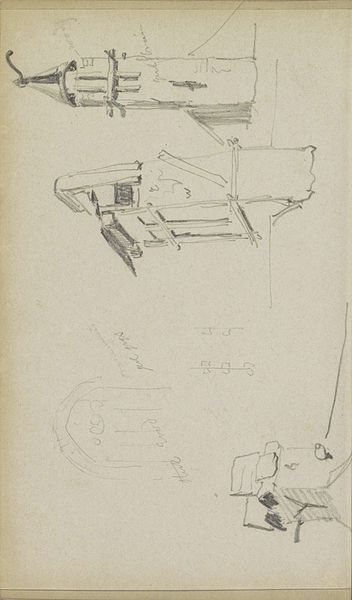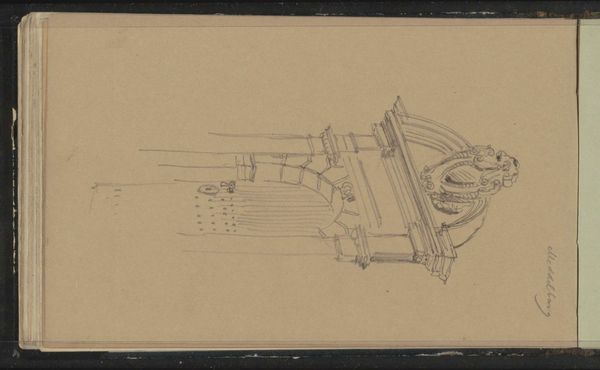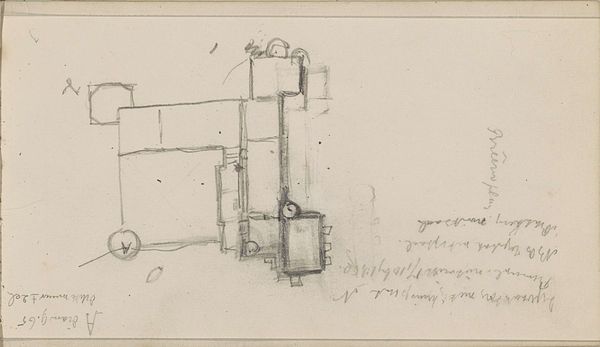
Vooraanzicht van een kerk en een Romaans venster 1905 - 1906
0:00
0:00
drawing, paper, pencil, architecture
#
drawing
#
paper
#
geometric
#
pencil
#
line
#
cityscape
#
architecture
Copyright: Rijks Museum: Open Domain
Editor: This is "Front View of a Church and a Romanesque Window," a pencil drawing on paper from 1905-1906, by Carel Adolph Lion Cachet, held here at the Rijksmuseum. The drawing feels like an architectural study, very linear and precise. What's most striking to you about this piece? Curator: Well, it’s interesting to consider this drawing in light of Cachet’s other works. He was deeply involved in the Arts and Crafts movement, which reacted against industrialization by emphasizing traditional craftsmanship and, often, a kind of idealized medievalism. Do you see any signs of that here? Editor: I think so. The focus on Romanesque architecture, with its rounded arches, feels like a conscious harking back to an earlier era of building. It’s almost like he’s looking for authenticity in pre-industrial forms. Curator: Precisely! And consider where and when this was made. Early 20th-century Netherlands was experiencing rapid urbanization. Artists like Cachet, through their depictions and revival of historical styles, engaged with a societal yearning for a connection to a perceived, simpler past, critiquing the alienation brought on by modern life. How do you think presenting this drawing helps shape our understanding of history? Editor: Maybe by showing how artists actively participated in shaping national identity, looking to the past to find meaning in the present. It wasn't just about documentation, but about active reinterpretation. Curator: Exactly. And the choice to depict it in a simple line drawing further reinforces this return to fundamental forms, before the excesses of industrial decoration. A very deliberate statement about societal values through art. Editor: That gives me a totally different way of seeing a "simple" architectural sketch. It's much more connected to society. Curator: I’m glad we could delve deeper. These images often provide glimpses into much larger social and artistic narratives.
Comments
No comments
Be the first to comment and join the conversation on the ultimate creative platform.
